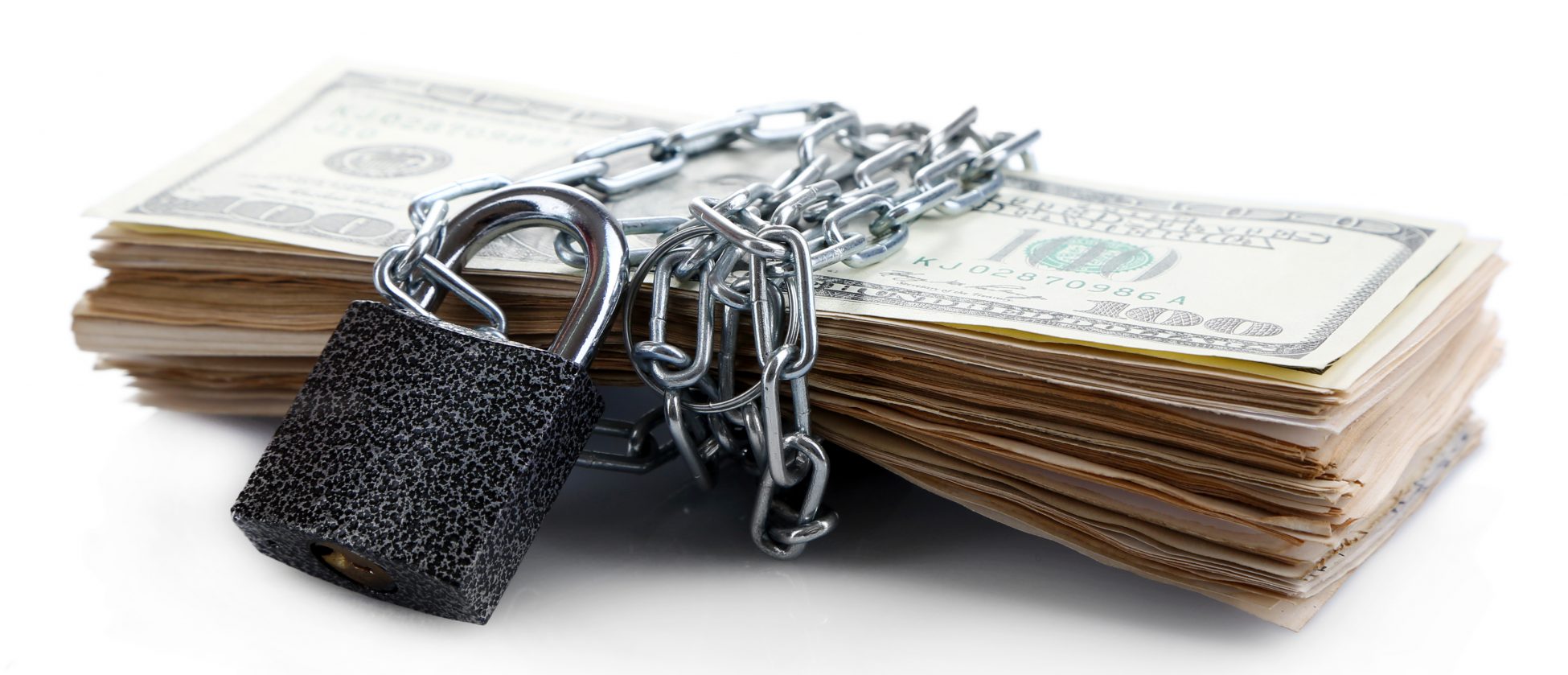- June 14, 2019
- Posted by: detaxify

We’ve already covered what a levy is and so if you’re here, there is a chance you’re actually currently facing an IRS bank levy. We hope this is not the case, but we’ll explain to you how it works. We will also discuss the potential options you have for dealing with a levy.
In many cases, an IRS bank levy results in your checking or savings account being frozen or put on hold. Your bank may be required to put the funds in your account on hold for 21 days. This can cause severe hardship for many individuals and families – especially if vital expenses, such as housing or rent need to be paid.
Common Misconceptions
A major misconception is that once you face an IRS bank levy, that those funds are simply gone. As stated above, an account goes into a hold or freeze status before the funds are released to the IRS. It is extremely vital to take action within this short window of opportunity. You might still have a chance to get a significant amount of your money unfrozen. In many cases, through proper negotiation, funds which are levied from the IRS can be partially or fully released.
There are other misconceptions. For instance, the IRS cannot levy your bank account without giving you advanced notice through a notice. Very high-risk Taxpayers may face a “jeopardy levy” (no notice is issued) but it’s only in extreme situations and it requires approval from IRS counsel.
For business owners, there is a different set of criteria for which an IRS bank levy may be released. For example, if your business has been levied for unpaid payroll taxes (Form 940 or Form 941 filings, for instance), the IRS will almost always release the bank levy so that you can pay your employees. The IRS does not want to harm employees when the target is the employer.
How does an IRS Bank Levy get Released
If an IRS bank levy has already occurred, it is essential to get in touch with the IRS as soon as possible. If you have a Revenue Officer assigned to your case, you will need to get in touch with this person as soon as possible. You may have the option to propose collection alternatives while considering resolution options. If you are not compliant with prior or ongoing tax obligations (whether they are filing or paying tax), then it is essential to get on a plan for compliance.
See below for resolution options which are applicable if an IRS bank levy is imposed or as a method for potentially preventing one.
Financial Hardship
One option for resolving an IRS bank levy is claiming Financial Hardship. Depending on where in the United States you reside, you are allowed certain amounts in housing expenses. Meanwhile you are given a national standard for food, clothing, and necessities. You may also be allowed to deduct transportation expenses (whether you own a car or take public transportation).
For compiling the proper information and negotiating for a Financial Hardship, you may wish to consider obtaining professional representation. Some Taxpayers may be eligible to obtain a designation called Currently Not Collectible. This puts you into a status where collections are halted due to your inability to pay towards tax. A Currently not Collectible status (or “CNC”) is only temporary and will not remove your tax debt. It will however prevent a bank levy or assist in releasing a levy. It is important to remember that the IRS will likely file a lien against you when obtaining CNC status.
IRS Bank Levy Compliance
A quick note on compliance – even if you claim financial hardship, in some cases, IRS collections will grant only a partial levy release instead of a full levy release. This is especially true if you are not in compliance. What does that mean? This means you may have not filed missing income tax returns, you might be underwithholding income tax from your paycheck or you may have avoided making quarterly estimated payments. It is key to have a plan for compliance when you get in touch with the IRS.
Offer in Compromise
Another option is perhaps the most advertised tax service out there: the Offer in Compromise (also known as a “OIC”). An OIC is a highly selective IRS program that allows taxpayers experiencing significant financial hardship to potentially settle their tax debts for a fraction of what they owe. Many tax resolution firms advertise this in a way to imply that it is a guarantee – however, it is in practice very selective.
We strongly advise of being wary of anyone who offers an OIC as a guarantee. The criteria used by the IRS is stringent. We will tell you up-front if you have a case which is worth filing an OIC for.
Collection Due Process Hearing – IRS Bank Levy Prevention
The third option is a preemptive protection against levies, known as a Collection Due Process Hearing (CDP Hearing). Usually, before a levy is issued, a Final Notice of Intent to Levy is issued (see our article here to identify the type of notice you have received). At this point, you have appeal rights to propose alternative collection alternatives. If you appeal within 30-days of the statutory Final Notice of Intent to Levy, you can further appeal to the U.S. Tax Court.
If 30 days have elapsed, you may still be able to appeal in what is known as an “Equivalency Hearing”. In this type of hearing, you can still propose collection alternatives to a collection officer from the IRS Office of Appeals. However, if the Office of Appeals does not find in your favor, you do not have rights to appeal to the U.S. Tax Court.
During a CDP hearing, you may argue various reasons for why a levy should not be issued against you. Some examples of collection alternatives include a reduced payment plan, inability to pay your taxes due to health reasons, extensive medical bills, financial hardship, or perhaps the fact you are a spouse claiming Innocent Spouse Relief.
IRS Installment Agreement
Another option for resolving an IRS bank levy is for when you do not have financial hardship. It is unwise to simply ignore the levy. If you do not qualify for financial hardship, an Installment Agreement may be a good option for you. This option allows taxpayers to enter into good standing with the IRS. The plan involves monthly installments paid towards the tax debt, determined on your financial situation. There are various types of installment agreements available to taxpayers. They vary in terms of length of the repayment plan, how much needs to paid on a monthly basis, and whether additional financial information is needed.
Be aware that with some Installment Agreements, a Notice of Federal Tax Lien will be filed against you. This is assuming one has not already been filed. In some cases, this may be inevitable.
Payment in full
An obvious option might be Payment in full. If during the 21 day period after a levy has been issued, you are able to pay off the outstanding liability, the IRS will lift the levy and the levied funds will be released. We find it rare that someone chooses use this option. We more often encounter clients who may not have the necessary cash to pay the IRS in full.
Getting Relief
Knowing what to do is only half the battle. Knowing how to do it is just as, if not more important. For this reason, we always recommend seeking out help from a trusted tax professional before communicating with the IRS. Inexperienced taxpayers can sometimes dig themselves into a deeper hole by oversharing their situation with IRS agents and revenue officers.

